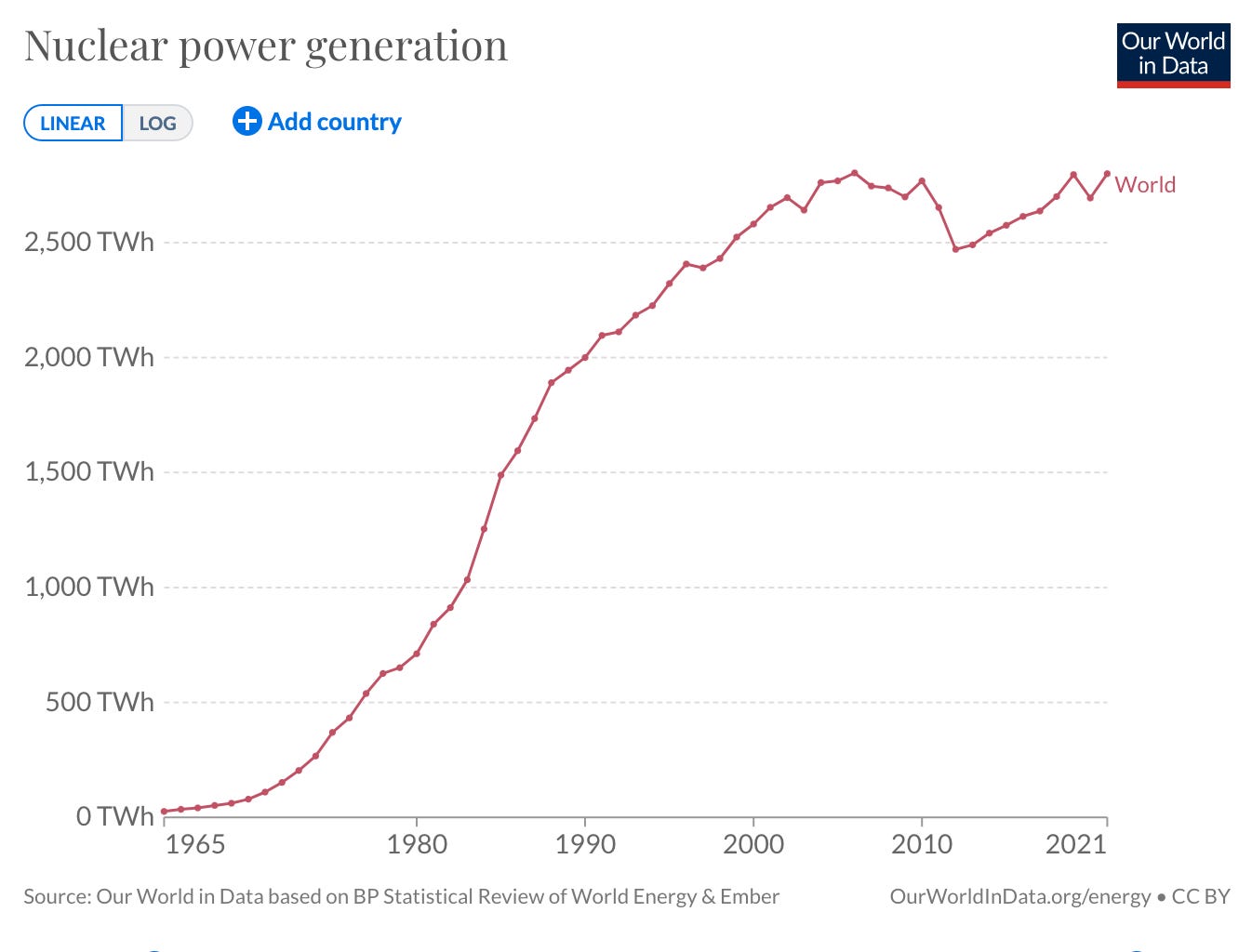Welcome to the mid-week update from New World Same Humans, a newsletter on trends, technology, and society by David Mattin.
If you’re reading this and haven’t yet subscribed, join 22,000+ curious souls on a journey to build a better future 🚀🔮
To Begin
This week, further evidence — in the form of new generative models from Google — that we’re amid an AI-fuelled creative revolution.
Also, the UK wants to build the world’s first on-grid nuclear fusion reactor. And Elon Musk unveils the Optimus humanoid robot.
Let’s go!
🎨 Light and magic
Another week, and yet another advance in the field of generative AI.
Google announced Imagen Video, a generative model that creates short animated videos based on text prompts.
The clips that result are around five seconds long, and somewhat low resolution. But the Google team say Imagen Video can mimic a range of visual styles — creating clips, for example, in the style of Van Gogh — and can create clips that convincingly model objects moving through three-dimensional spaces.
The model builds on Google’s Imagen text-to-image system, which I wrote about in New Week #84. It was trained via exposure to tens of millions of labelled images and videos — called ‘image-text pairs’ — including the publicly available LAION-400M image-text dataset.
Meanwhile, a separate Google team published news of their work on another text-to-video model, Phenaki. This one is focused on turning longer narrative prompts — think a long paragraph — into videos that last two or three minutes.
According to Jonathan Ho, one of the Google researchers behind this work, the Imagen and Phenaki teams will eventually join forces. Neither tool is yet available to the public.
⚡ NWSH Take: Back when it launched (in May!) the Imagen text-to-image tool seemed magical. Now look where we are. Last week Meta broke new ground with its text-to-video model; just one week later Google have announced a video model of their own. What’s more, Phenaki points towards a future in which we can write an entire story and see it instantly transformed into a movie. // We’re witnessing the birth of new art forms. The questions this raises are manifold. Can AI generated image and video really be art? What will happen to illustrators and animators? Aren’t these tools stripping the humanity out of creative visual forms? The same questions were posed 180 years ago at the advent of photography. In the end, human artists survived; they will survive the advent of AI art, too. And we came to recognise that photography was a skill all of its own, just as we’ll come to recognise the craft that is prompting and iterating the outputs of generative models. // Want a glimpse of what is coming? Take a look at Novel.ai, a GPT-3 fuelled storytelling tool that allows users to generate stories in various genres, and to imitate their favourite authors. The platform just added a text-to-image tool powered by Stable Diffusion, and trained to output images in the anime style. An amazing amplification of human creative capacity is underway. Yes, there are huge questions. But if you’re not at least a little excited, check your pulse.
💥 Love your energy
The UK government this week confirmed its ambition to get a nuclear fusion reactor on-grid by 2040.
Speaking at the annual Conservative Party Conference, business secretary Jacob Rees-Mogg (famous here in the UK for his unique brand of Victorian gentleman cosplay) said a fusion reactor will be built in Nottinghamshire, where it will replace a coal-fired power station due to be closed this year. The ‘first of its kind’ reactor would ‘prove the commercial viability of fusion energy to the world’ said Rees-Mogg.
The UK opened the world’s first commercial nuclear fission reactor, Calder Hall 1, in 1956. It closed in 2003. That parallels the global story on nuclear, which advanced rapidly from the mid-1960s before flatlining around 2000.
Prominent accidents, including Chernobyl in 1986 and Fukushima in 2011, dramatically cooled enthusiasm for nuclear. Germany announced the planned closure of all its nuclear power plants in the wake of Fukushima.
Now, amid advances in nuclear tech and a hugely challenging energy environment, interest is renewed. Back in New Week #93 I wrote about Nuscale, a US startup creating small, modular nuclear reactors that are far quicker and cheaper to build than traditional nuclear plants.
⚡ NWSH Take: Both short term shocks and long term shifts are pushing nuclear back on the agenda. Germany’s decision to shut down nuclear looks rash in light of Russia’s war in Ukraine; the country just announced it will keep two nuclear plants on standby until at least April 2023. But the deeper context here is the race to decarbonise. And the conversation is split between those who believe nuclear must play a crucial role, and those who believe that’s madness. // Critics point out that nuclear power plants take decades to build, and are hugely expensive. Pro-nuclear types say that’s only because we stopped building such plants, allowing the expertise and innovation to wither: it was, they argue, a historic wrong turning. Startups such as Nuscale want to address cost and speed concerns via their modular designs. // But the real nuclear hope now revolves around fusion reactors, which cannot melt down, create no long-lived nuclear waste, and generate several times more energy than their fission counterparts. The UK’s government’s talk of 2040, though, reflects only an aspiration; we’re still some way from controlled and useful fusion. Decarbonisation needs to happen now; most likely fusion won’t play a meaningful role. But we should still keep pushing as hard as possible. Nuclear’s unpopularity is mostly undeserved, and the collective decision to let the tech stagnate was a mistake. This time can be different.
🤖 Autobots assemble
Amid a raft of robot news this week, Elon Musk unveiled his latest zeitgeist-chasing bid for attention. I speak of the Optimus robot.
Musk had promised that Optimus would be unveiled at the Tesla AI Day event, which took place on Saturday. Back in New Week #86, I expressed scepticism that such an unveiling would occur.
I’m happy to admit that I was half-wrong. Optimus did make an appearance. But the device that limped on to the stage this week was hardly the all-purpose wonderbot hat Musk has been trailing. It was, of course, never going to be.
Meanwhile, other robot innovators made headlines of their own. Automated pizza startup Stellar Pizza — founded by three former SpaceX engineers — received a $16.5 million investment from Jay-Z. The company plans to roll out its first mobile, automated pizza restaurants in Los Angeles later this year.
And Boston Dynamics — whose work seems to have helped inspire Optimus — published an open letter condemning the ‘weaponisation of general purpose robots’.
‘We pledge that we will not weaponize our advanced-mobility general-purpose robots or the software we develop that enables advanced robotics, and we will not support others to do so. When possible, we will carefully review our customers’ intended applications to avoid potential weaponization. We also pledge to explore the development of technological features that could mitigate or reduce these risks.’
The letter was co-signed by a number of other robotics startups, and comes amid a report this week that appears to show a Chinese-made drone carrying and then dropping a robot dog armed with a machine gun.
⚡ NWSH Take: I know NWSH gives Musk a hard time, what with this and my obsession with the way Starlink satellites are damaging our view of the night sky. But when it comes to Optimus, it’s not just me. Here are a raft of robotics and AI experts calling it, among other things, ‘next-level cringeworthy’. // Don’t let Musk’s need to be the centre of the Twitterverse distract you, though, from the real advances being made. Automation is stealthily taking over the fast food industry; see both Stellar Pizza and Flippy, the burger-making robot set to replace many kitchen staff. Eventually, all-purpose helper robots will arrive in our homes. Before that, we need to think about the nature of this supposed robot utopia.
🗓️ Also this week
⛷ Saudi Arabia will host the 2029 Asian Winter Games at a mountain resort near its planned hyper-futuristic NEOM city. Officials say Saudi’s Trojena mountain resort will be completed in 2026, and will offer outdoor skiing and an artificial freshwater lake. I last wrote on NEOM back in New Week #92.
🏀 NBA star Luka Dončić has created a virtual version of himself to star in his TikTok videos. Dončić used the MetaHuman Creator from Epic Games to create hiw own photorealistic digital twin, which is called Luk.AI. The rise of AI-fuelled virtual humans is a NWSH obsession; see Kim Kardashian, Virtual Humans, and How Weird Becomes Mainstream for more.
⚖️ The White House announced a new AI Bill of Rights. The guidelines say US citizens should be aware when AIs or automated systems are making decisions that impact them, and should be able to opt out of such systems. But critics say the proposals, which will not become law, will not change the behaviour of Big Tech.
🐛 Spanish scientists say worm saliva can break down plastics. The researchers discovered that chemicals in the saliva of the wax worm can break down polyethylene, the world’s most used plastic. Just one hour of exposure can cause degradation that typically takes several years to occur.
👁 A new AI tool can predict your risk of heart disease by scanning your retina. A new paper in the British Journal of Ophthalmology says the tool analyses veins and arteries in the eye, and can deliver an accurate risk of heart disease and stroke within 60 seconds.
👟 The NFT sneaker agency RTFKT showcased its first real shoes. RTFKT sold $3 million worth of NFT shoes in 2021 and was acquired by Nike at the end of that year. It’s CryptoKick Sneakers will retail for $300; no release date has been announced.
🌌 A new study says advertising billboards in space could display ads to every corner of the planet. Researchers at the Moscow Institute of Physics and Technology say a constellation of 50 satellites could use reflected sunlight to spell out short words in the night sky. Ready for the Nike tick in Space? The Amazon Prime logo? Please, don’t get me started.
🌍 Humans of Earth
Key metrics to help you keep track of Project Human.
🙋 Global population: 7,979,453,359
🌊 Earths currently needed: 1.7901385543
💉 Global population vaccinated: 62.8%
🗓️ 2022 progress bar: 77% complete
📖 On this day: On 7 October 1913 the Ford Motor Company introduces the world’s first moving vehicle assembly line, reducing the time it takes to build one car from 12 hours to around 90 minutes.
Pure Imagination
Thanks for reading this week.
The advances being made by AI generative models means a future in which human imagination is unleashed in amazing new ways. It’s yet another case of new world, same humans.
This newsletter will keep watching. And there’s one thing you can do to help: share!
Now you’ve reached the end of this week’s instalment, why not forward the email to someone who’d also enjoy it? Or share it across one of your social networks, with a note on why you found it valuable. Remember: the larger and more diverse the NWSH community becomes, the better for all of us.
I’ll be back next week. Until then, be well,
David.
P.S Huge thanks to Nikki Ritmeijer for the illustration at the top of this email. And to Monique van Dusseldorp for additional research and analysis.


















New Week #101